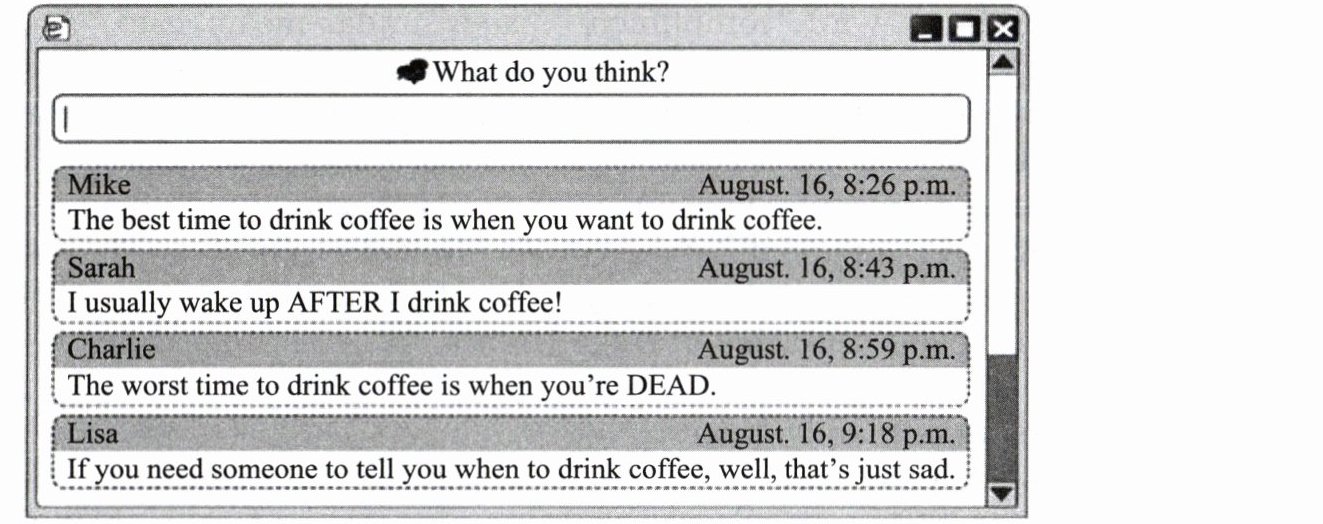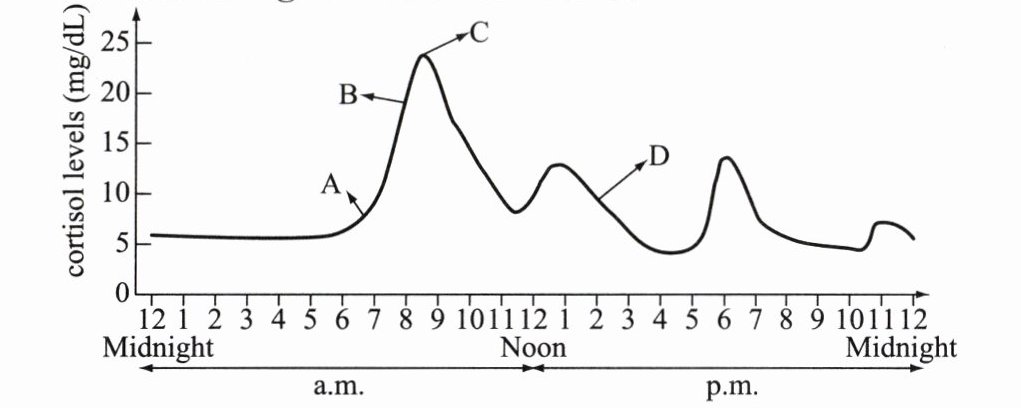一、完形填空(10分)
A few years ago, I was taking a part-time summer job at a local ice cream shop. While handing a fudge sundae(奶油圣代) to an old woman at the drive-thru window, I noticed that she had a box of purple 1 .
As I handed her the sundae, I said, “Those tomatoes look special! What kind are they?”
She replied, “Here, have some!” Within 2 , I had a handful of purple tomatoes. “Oh, you don’t need to give me any!” I said. “They’re purple! They must be 3 .”
“Here, have more,” she insisted(坚持) and now I had six of the prettiest tomatoes I had ever seen. I weakly tried to 4 , “Really you don’t have to give me any...” The woman smiled again and said, “I hope you enjoy 5 . They’re an heirloom(祖传) type that my mum used to 6 .” I said thank you again, and she sped off. She was like a tooth fairy: I gave her ice cream and she gave me tomatoes.
About two weeks later, my boss at the ice cream store sent me a WeChat 7 . “I want to let you know that your gardener dropped off a box of vegetables for you.” Baffled(困惑不解), I replied, “ 8 ?” That night, my boss showed me the 9 . It was full of carrots, beans, potatoes and tomatoes — purple tomatoes. My tomato fairy was back!
I never saw her again, but to this day her 10 inspires(激励) me to share what I have with anyone who’ll have it. “All I ask is an ice cream cone in return. Better yet, pay it forward and be someone else’s secret gardener.”
(
(
(
(
(
(
(
(
(
(
A few years ago, I was taking a part-time summer job at a local ice cream shop. While handing a fudge sundae(奶油圣代) to an old woman at the drive-thru window, I noticed that she had a box of purple 1 .
As I handed her the sundae, I said, “Those tomatoes look special! What kind are they?”
She replied, “Here, have some!” Within 2 , I had a handful of purple tomatoes. “Oh, you don’t need to give me any!” I said. “They’re purple! They must be 3 .”
“Here, have more,” she insisted(坚持) and now I had six of the prettiest tomatoes I had ever seen. I weakly tried to 4 , “Really you don’t have to give me any...” The woman smiled again and said, “I hope you enjoy 5 . They’re an heirloom(祖传) type that my mum used to 6 .” I said thank you again, and she sped off. She was like a tooth fairy: I gave her ice cream and she gave me tomatoes.
About two weeks later, my boss at the ice cream store sent me a WeChat 7 . “I want to let you know that your gardener dropped off a box of vegetables for you.” Baffled(困惑不解), I replied, “ 8 ?” That night, my boss showed me the 9 . It was full of carrots, beans, potatoes and tomatoes — purple tomatoes. My tomato fairy was back!
I never saw her again, but to this day her 10 inspires(激励) me to share what I have with anyone who’ll have it. “All I ask is an ice cream cone in return. Better yet, pay it forward and be someone else’s secret gardener.”
(
A
) 1. A. tomatoes B. carrots C. beans D. potatoes(
D
) 2. A. years B. hours C. minutes D. seconds(
A
) 3. A. expensive B. cheap C. sweet D. tasty(
C
) 4. A. thank B. accept C. refuse D. explain(
B
) 5. A. it B. them C. yourself D. myself(
B
) 6. A. buy B. plant C. pick D. sell(
A
) 7. A. message B. description C. introduction D. instruction(
A
) 8. A. Who B. When C. Where D. Why(
C
) 9. A. shop B. message C. box D. garden(
B
)10. A. happiness B. kindness C. loneliness D. business答案:
1. A
2. D
3. A
4. C
5. B
6. B
7. A
8. A
9. C
10. B
1. A
2. D
3. A
4. C
5. B
6. B
7. A
8. A
9. C
10. B
解析:
翻译:
### 一、完形填空(10分)
几年前,我在当地一家冰淇淋店做暑期兼职。在汽车穿梭窗口给一位老妇人递一份奶油圣代时,我注意到她有一盒紫色的**1**。
当我把圣代递给她时,我说:“那些西红柿看起来很特别!它们是什么品种的?”
她回答说:“来,拿一些!”几**2**之内,我就拿到了一把紫色的西红柿。“哦,你不需要给我任何(西红柿)!”我说。“它们是紫色的!它们一定很**3**。”
“来,多拿点,”她坚持道,现在我有了六个我见过的最漂亮的西红柿。我无力地试图**4**:“真的,你不必给我任何(西红柿)……”这位女士又笑了笑,说:“我希望你喜欢**5**。它们是我妈妈过去常**6**的一种祖传品种。”我再次说了声谢谢,然后她迅速开车走了。她就像牙仙子:我给她冰淇淋,她给我西红柿。
大约两周后,我在冰淇淋店的老板给我发了一条微信**7**。“我想让你知道,你的园丁给你送来了一盒蔬菜。”我很困惑,回答说:“**8**?”那天晚上,我的老板给我看了那个**9**。里面装满了胡萝卜、豆子、土豆和西红柿——紫色的西红柿。我的西红柿仙子回来了!
我再也没有见过她,但直到今天,她的**10**仍激励着我与任何想要的人分享我所拥有的东西。“我只要求一个冰淇淋蛋筒作为回报。更好的是,把这份善意传递下去,成为别人的秘密园丁。”
( )1. A. 西红柿 B. 胡萝卜 C. 豆子 D. 土豆
( )2. A. 年 B. 小时 C. 分钟 D. 秒
( )3. A. 昂贵的 B. 便宜的 C. 甜的 D. 美味的
( )4. A. 感谢 B. 接受 C. 拒绝 D. 解释
( )5. A. 它 B. 它们 C. 你自己 D. 我自己
( )6. A. 买 B. 种植 C. 采摘 D. 出售
( )7. A. 消息 B. 描述 C. 介绍 D. 说明
( )8. A. 谁 B. 什么时候 C. 哪里 D. 为什么
( )9. A. 商店 B. 消息 C. 盒子 D. 花园
( )10. A. 幸福 B. 善良 C. 孤独 D. 生意
### 一、完形填空(10分)
几年前,我在当地一家冰淇淋店做暑期兼职。在汽车穿梭窗口给一位老妇人递一份奶油圣代时,我注意到她有一盒紫色的**1**。
当我把圣代递给她时,我说:“那些西红柿看起来很特别!它们是什么品种的?”
她回答说:“来,拿一些!”几**2**之内,我就拿到了一把紫色的西红柿。“哦,你不需要给我任何(西红柿)!”我说。“它们是紫色的!它们一定很**3**。”
“来,多拿点,”她坚持道,现在我有了六个我见过的最漂亮的西红柿。我无力地试图**4**:“真的,你不必给我任何(西红柿)……”这位女士又笑了笑,说:“我希望你喜欢**5**。它们是我妈妈过去常**6**的一种祖传品种。”我再次说了声谢谢,然后她迅速开车走了。她就像牙仙子:我给她冰淇淋,她给我西红柿。
大约两周后,我在冰淇淋店的老板给我发了一条微信**7**。“我想让你知道,你的园丁给你送来了一盒蔬菜。”我很困惑,回答说:“**8**?”那天晚上,我的老板给我看了那个**9**。里面装满了胡萝卜、豆子、土豆和西红柿——紫色的西红柿。我的西红柿仙子回来了!
我再也没有见过她,但直到今天,她的**10**仍激励着我与任何想要的人分享我所拥有的东西。“我只要求一个冰淇淋蛋筒作为回报。更好的是,把这份善意传递下去,成为别人的秘密园丁。”
( )1. A. 西红柿 B. 胡萝卜 C. 豆子 D. 土豆
( )2. A. 年 B. 小时 C. 分钟 D. 秒
( )3. A. 昂贵的 B. 便宜的 C. 甜的 D. 美味的
( )4. A. 感谢 B. 接受 C. 拒绝 D. 解释
( )5. A. 它 B. 它们 C. 你自己 D. 我自己
( )6. A. 买 B. 种植 C. 采摘 D. 出售
( )7. A. 消息 B. 描述 C. 介绍 D. 说明
( )8. A. 谁 B. 什么时候 C. 哪里 D. 为什么
( )9. A. 商店 B. 消息 C. 盒子 D. 花园
( )10. A. 幸福 B. 善良 C. 孤独 D. 生意
二、阅读理解(16分)
A
Material 1:
For many people, having a cup of coffee right out of bed is the best way to start a day. But a report from ASAP Science says otherwise.
It says the worst time for coffee is soon after we get up. When we wake up, our bodies start to make cortisol (皮质醇). Cortisol helps us think clearly and be quick to understand and act. The cortisol levels rise after we wake up and climb to the highest in about an hour. So there are two problems when we drink coffee during this time: Our bodies will make less cortisol, and the cortisol will make coffee less useful. And that’s why some of us drink more and more coffee.
Then, when is the best time to have coffee? When the cortisol levels are going down, the report says. Cortisol levels are usually highest between 8 a.m. and 9 a.m., between noon and 1 p.m., and between 5:30 p.m. and 6:30 p.m. So if you want to have coffee, enjoy it after these times, and this popular drink will help you the most.
Material 2:
Four people read the passage and wrote what they thought about it.

(
A. They are serious about it. B. They have no idea about it.
C. They think differently about it. D. They do not think it is a problem.
(

(
A. They wanted to try what it said. B. They were sad about what it said.
C. They did not agree with what it said. D. They were not surprised at what it said.
A
Material 1:
For many people, having a cup of coffee right out of bed is the best way to start a day. But a report from ASAP Science says otherwise.
It says the worst time for coffee is soon after we get up. When we wake up, our bodies start to make cortisol (皮质醇). Cortisol helps us think clearly and be quick to understand and act. The cortisol levels rise after we wake up and climb to the highest in about an hour. So there are two problems when we drink coffee during this time: Our bodies will make less cortisol, and the cortisol will make coffee less useful. And that’s why some of us drink more and more coffee.
Then, when is the best time to have coffee? When the cortisol levels are going down, the report says. Cortisol levels are usually highest between 8 a.m. and 9 a.m., between noon and 1 p.m., and between 5:30 p.m. and 6:30 p.m. So if you want to have coffee, enjoy it after these times, and this popular drink will help you the most.
Material 2:
Four people read the passage and wrote what they thought about it.

(
C
) 1. What does it mean when someone thinks “otherwise” about something?A. They are serious about it. B. They have no idea about it.
C. They think differently about it. D. They do not think it is a problem.
(
D
) 2. The picture below shows how the cortisol levels rise and fall during the day. From Material 1, which is a good time for coffee?
(
C
) 3. What did the four people think about Material 1?A. They wanted to try what it said. B. They were sad about what it said.
C. They did not agree with what it said. D. They were not surprised at what it said.
答案:
1. C
2. D
3. C
1. C
2. D
3. C
解析:
翻译:
二、阅读理解(16分)
A
材料1:
对很多人来说,一起床就喝杯咖啡是开启一天的最佳方式。但ASAP科学网站的一份报告却不这么认为。
报告称,起床后不久是喝咖啡最糟糕的时间。当我们醒来时,我们的身体会开始分泌皮质醇。皮质醇能帮助我们清晰思考,快速理解和行动。我们醒来后皮质醇水平会上升,并在大约一小时内达到最高值。所以在这段时间喝咖啡会有两个问题:我们的身体会分泌更少的皮质醇,而且皮质醇会降低咖啡的效用。这就是为什么我们中的一些人会喝越来越多咖啡的原因。
那么,什么时候是喝咖啡的最佳时间呢?报告称,当皮质醇水平开始下降的时候。皮质醇水平通常在上午8点到9点、中午12点到下午1点以及下午5点30分到6点30分之间达到最高。所以如果你想喝咖啡,在这些时间之后享用,这种受欢迎的饮品会对你帮助最大。
材料2:
四个人读了这篇文章并写下了他们的看法。
( )1. 当有人对某件事的看法“不同”时,这是什么意思?
A. 他们对此很认真。
B. 他们对此一无所知。
C. 他们对此的看法不同。
D. 他们认为这不是个问题。
( )2. 下面的图表显示了一天中皮质醇水平的升降情况。根据材料1,哪个时间适合喝咖啡?
( )3. 这四个人对材料1的看法是什么?
A. 他们想尝试材料1中所说的做法。
B. 他们对材料1中所说的内容感到难过。
C. 他们不同意材料1中所说的内容。
D. 他们对材料1中所说的内容并不感到惊讶。
二、阅读理解(16分)
A
材料1:
对很多人来说,一起床就喝杯咖啡是开启一天的最佳方式。但ASAP科学网站的一份报告却不这么认为。
报告称,起床后不久是喝咖啡最糟糕的时间。当我们醒来时,我们的身体会开始分泌皮质醇。皮质醇能帮助我们清晰思考,快速理解和行动。我们醒来后皮质醇水平会上升,并在大约一小时内达到最高值。所以在这段时间喝咖啡会有两个问题:我们的身体会分泌更少的皮质醇,而且皮质醇会降低咖啡的效用。这就是为什么我们中的一些人会喝越来越多咖啡的原因。
那么,什么时候是喝咖啡的最佳时间呢?报告称,当皮质醇水平开始下降的时候。皮质醇水平通常在上午8点到9点、中午12点到下午1点以及下午5点30分到6点30分之间达到最高。所以如果你想喝咖啡,在这些时间之后享用,这种受欢迎的饮品会对你帮助最大。
材料2:
四个人读了这篇文章并写下了他们的看法。
( )1. 当有人对某件事的看法“不同”时,这是什么意思?
A. 他们对此很认真。
B. 他们对此一无所知。
C. 他们对此的看法不同。
D. 他们认为这不是个问题。
( )2. 下面的图表显示了一天中皮质醇水平的升降情况。根据材料1,哪个时间适合喝咖啡?
( )3. 这四个人对材料1的看法是什么?
A. 他们想尝试材料1中所说的做法。
B. 他们对材料1中所说的内容感到难过。
C. 他们不同意材料1中所说的内容。
D. 他们对材料1中所说的内容并不感到惊讶。